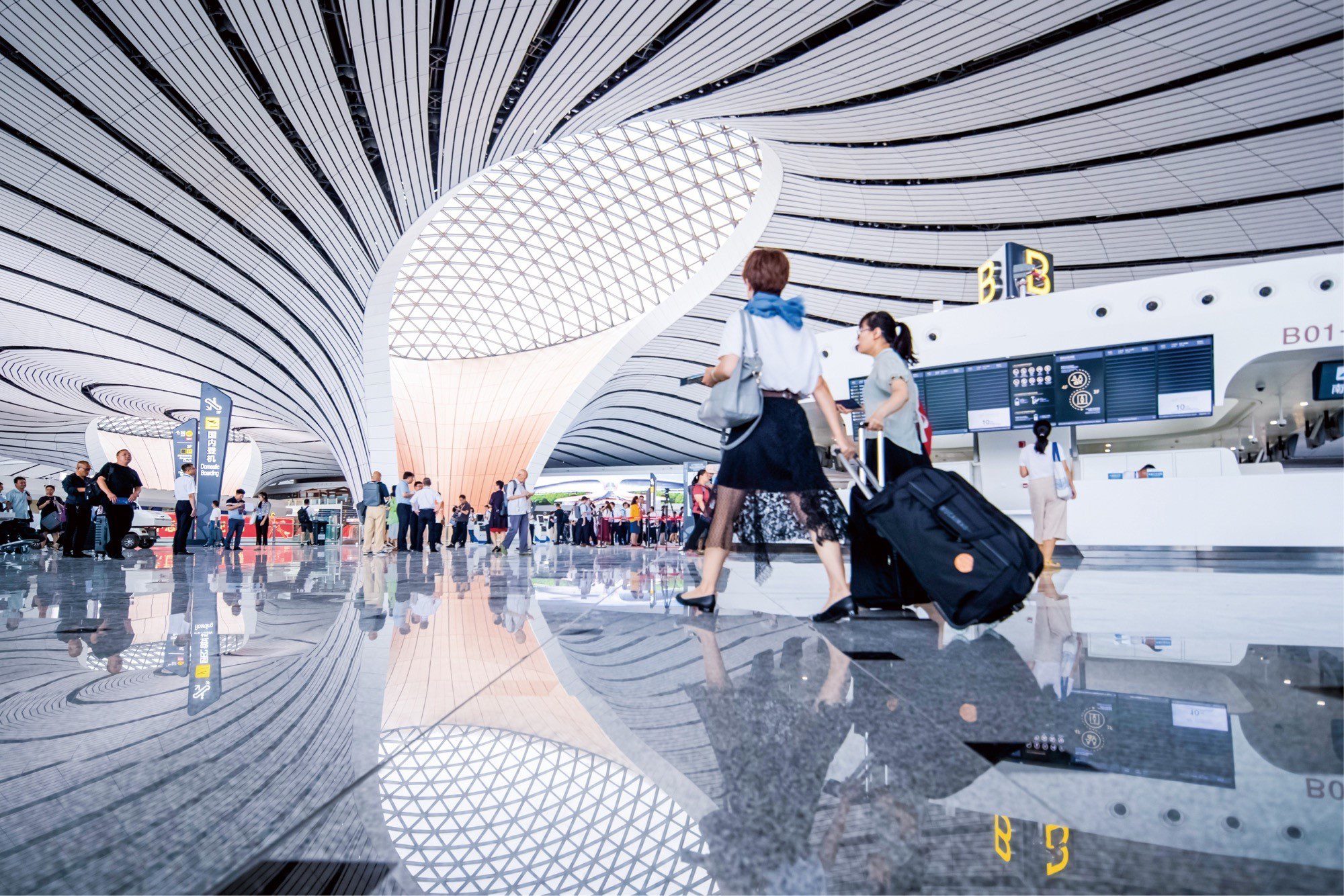The Rise of Smart Airports: A Skift Deep Dive

Photo Credit: The main hall of Beijing Daxing International Airport in October 2019, one month after its opening. British Airways
Skift Take
After years of being stuck in the past, new "smart" airports are embracing technology and data to improve the experience for both passengers and vendors. But progress is still slow, widening the gap between cutting-edge and archaic facilities. What's needed? More vision, less bureaucracy.
In late September, Beijing unveiled to the world Daxing, a glimmering $11 billion airport showcasing technologies such as robots and facial recognition scanners that many other airports worldwide are either adopting or are now considering.
Daxing fits the description of what experts hail as a "smart airport." Just as a smart home is where internet-connected devices control functions like security and thermostats, smart airports use cloud-based technologies to simplify and improve services.
Of course, many of the nearly 4,000 scheduled service airports across the world are still embarrassingly antiquated. The good news for aviation is that more facilities are investing, finally, to better serve airlines, suppliers, and travelers.
This year, airports worldwide will spend $11.8 billion — 68 percent more than the level three years ago — on information technology, according to an estimate published this month by SITA (Société Internationale de Telecommunications Aeronautiques, an airline-owned tech provider).
A few trends are driving the rise of smart airports. Flight volumes are increasing, so airports need better ways to process flyers. Airports need better ways to make money, too, by encouraging passengers to spend more in their shops and restaurants.
Data is growing in importance. Everything happening at an airport, from where passengers are flowing to which items are selling in stores, generates data. Airports can analyze this data to spot opportunities for eking out fatter profits. They can sell the data to third-parties as well.
Still, a few tensions complicate the transformation to smart airports. A key holdup is strained relationships and finger-pointing among stakeholders over politics, budgets, and process.
Things can go wrong. Just ask Germany. Berlin has spent $6 billion on a new airport that may never open. The story has earned its own podcast called How to F--- Up an Airport.
Questions about how data is collected, how it's shared, and who pays for the new equipment and software are often tricky to answer. After all, airport operators must collaborate with partners such as airlines, concessions, and authorities like border agencies — each with its own goals.
A digital divide may be opening as a result. The rise of smart airports may wrench apart a gap between largely behind-the-times U.S. airports and more innovative ones in parts of Asia, Eu

